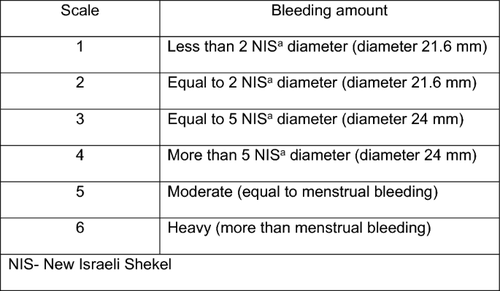Archives of Gynecology and Obstetrics ( IF 2.6 ) Pub Date : 2024-03-16 , DOI: 10.1007/s00404-024-07457-7 Hadel Watad , Udi Ifrach , David Stockheim , Vered Yulzari , Orly C. Meron , Miri Blank , Benjamin Sredni , Boaz Weisz , Shlomo B. Cohen

|
Purpose
The objective of this study is to assess the correlation between bleeding irregularities and the accurate placement of the intrauterine device (IUD) device in the uterine cavity, determined through transvaginal ultrasonography and hysteroscopy. In addition, the study aims to examine the cytokine profile in the uterine cavity and serum of patients experiencing bleeding irregularities after the insertion of nonhormonal IUDs.
Methods
A prospective cohort study was conducted at a single tertiary medical center, wherein patients experiencing intermenstrual bleeding and spotting after the insertion of nonhormonal IUDs were enrolled. The study involved hysteroscopic and sonographic assessments of the uterine cavity and IUD placement, along with the analysis of blood and uterine cavity cytokine profiles.
Results
During the period between July 2019 and February 2020, a total of eight patients who experienced intermenstrual bleeding and spotting after the insertion of nonhormonal IUDs were enrolled the study. One case was excluded since a progestative device was detected by ultrasound. Out of the five cases that underwent a thorough ultrasonographic assessment, three cases (60%) showed an embedded IUD. However, these findings were excluded by the hysteroscopic evaluation.
Conclusion
The results suggest that ultrasonographic assessment may lead to an overdiagnosis of IUD mispositioning compared to hysteroscopy. In addition, both ultrasound and hysteroscopy have limitations in diagnosing the cause of bleeding in most cases. The role of local reactive inflammatory cytokines should be further studied.
中文翻译:

使用非激素宫内节育器患有月经过多的女性的超声、宫腔镜检查和细胞因子之间的矛盾结果:一项前瞻性研究
目的
本研究的目的是评估不规则出血与通过经阴道超声检查和宫腔镜检查确定的宫内节育器 (IUD) 装置在子宫腔中准确放置之间的相关性。此外,该研究旨在检查插入非激素宫内节育器后出现不规律出血的患者子宫腔和血清中的细胞因子谱。
方法
在一家三级医疗中心进行了一项前瞻性队列研究,其中纳入了放置非激素宫内节育器后出现经间期出血和点滴出血的患者。该研究涉及对子宫腔和宫内节育器放置的宫腔镜和超声检查评估,以及血液和子宫腔细胞因子谱的分析。
结果
2019年7月至2020年2月期间,共有8名在放置非激素宫内节育器后出现经间期出血和点滴出血的患者纳入了该研究。由于超声检测到孕育装置,排除了 1 例。在接受彻底超声检查评估的 5 例病例中,3 例 (60%) 显示有嵌入式宫内节育器。然而,这些发现被宫腔镜评估排除了。
结论
结果表明,与宫腔镜检查相比,超声检查评估可能会导致宫内节育器错位的过度诊断。此外,在大多数情况下,超声和宫腔镜检查在诊断出血原因方面都有局限性。局部反应性炎症细胞因子的作用应进一步研究。






























 京公网安备 11010802027423号
京公网安备 11010802027423号